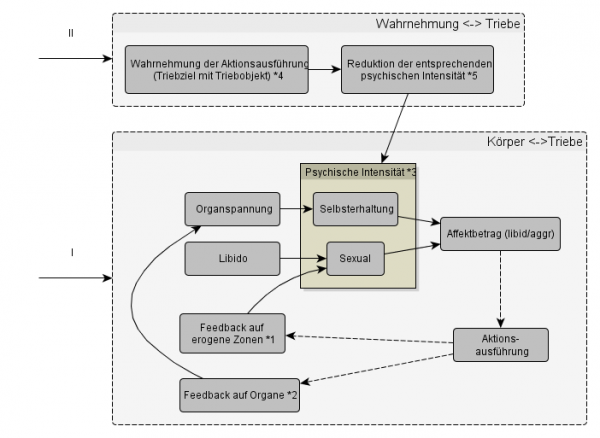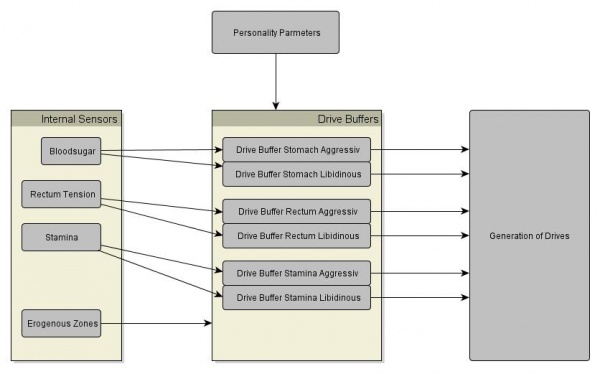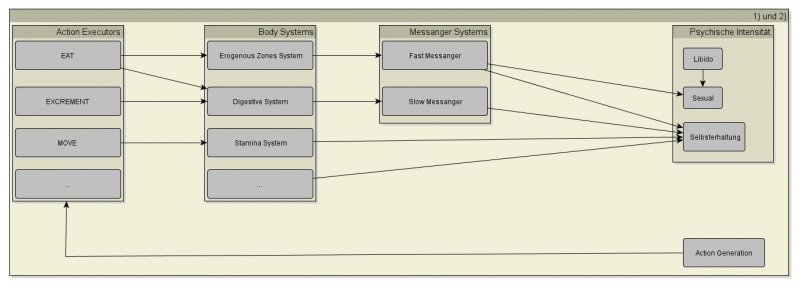Drives
Contents
Overview
In following figure an overview of the drive cyclus is given.
First...
Details are given in the respective figures.
Drive Generation
We distinguish between sexual and self preservation drives. Self preservation drives are connected to signals from body parts. Sexual drives are powered by the libido.
Sexual Drives
There is a buffer for each drive component of each sexual drive. The buffer works like a tank (see picture below). The generated libido stream is divided and defines the inflow of each tank. These division is based on the personality parameters. We use the signals from the erogenous zones to reduce the tank level. The level of the tank defines the strength of the corresponding drive.
Following figure describes *3 of the overview-figure
Self Preservation Drives
As mentioned above the self preservation drives correspond to an input from a body sensor(e.g. the heigh of the blood sugar correspond to the stomach drive). Like the sexual drives they also use a buffer system. The inflow of the buffer is defined by the sensor input, the personality parameters and the signals from the erogenous zones.
Drive satisfaction
To satisfy the drive we either use direct feedback from the body or we satisfy the drive throw the visual perception of the action.
Body Feedback
For actions with direct effect on the body we detect these effect as a change of the values of the internal body sensors.(e.g. the action eat changes the blood sugar value).
Following figures describes *1 and *2 of the overview-figure.
Satisfaction of complex drives
To detect the execution of complex actions(with no direct effect on the body) we us the visual perception. Each action executor stores the action as a part of his own entity. The vision sensor detects his own body as entity with the included action. So it is possible to attach the perceived action to the self object.
The module F45 uses the self object with the attached action to satisfy (depending on the memory) the corresponding drive.
This corresponds to *4 and *5 of the overview-figure
Erinnerungssuche, welchen Trieb die wahrgenommenen Aktion mit Objekt reduziert und in welchem Ausmaß Searchpattern: Triebziel (wahrgenommene Aktion bei Self), Triebobjekt



